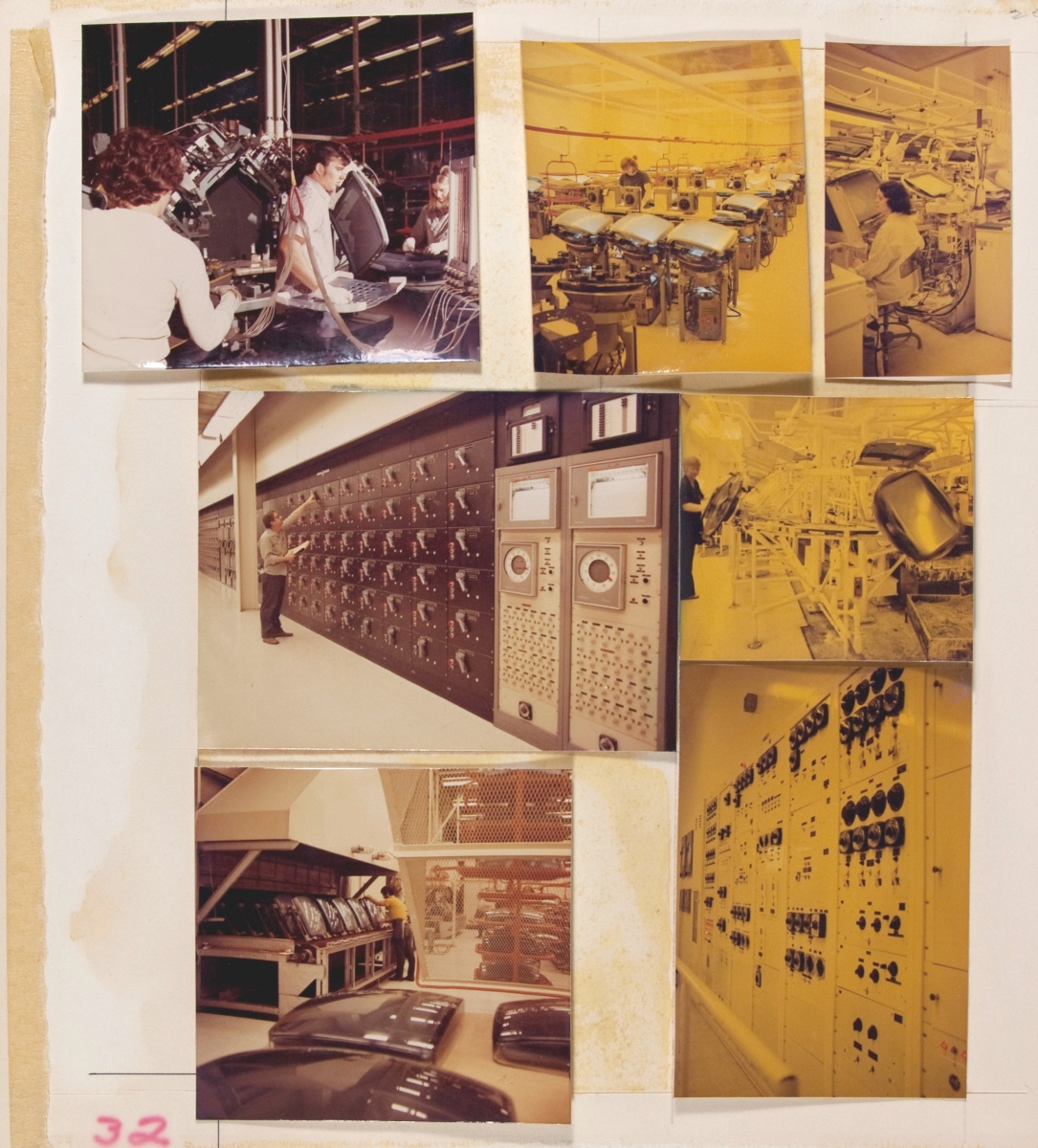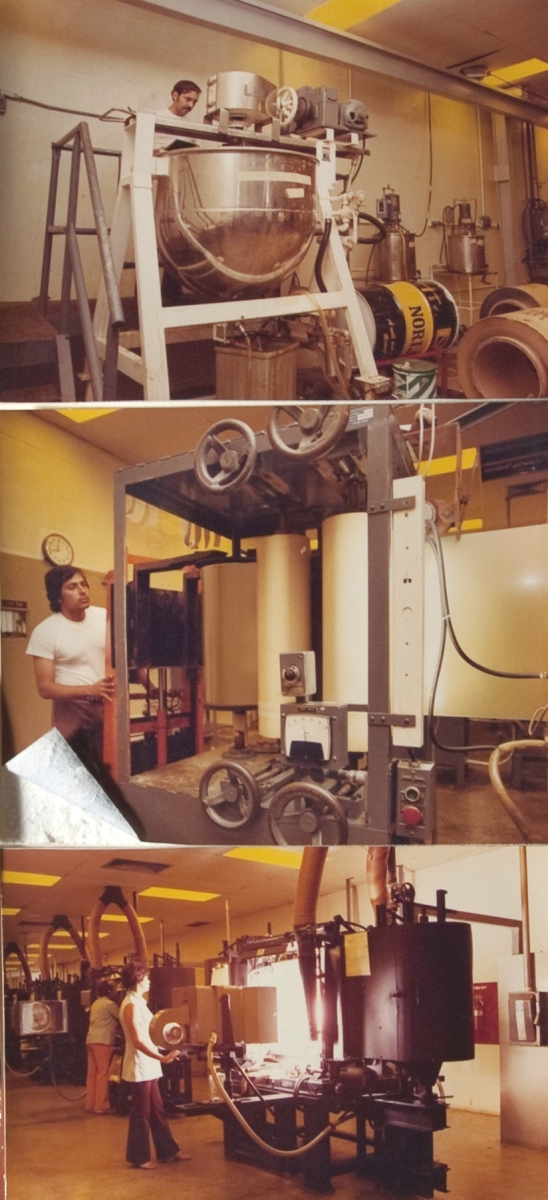In the Conservation Lab we now have a few dozen illustration boards laid out with photographs showing the process of cathode ray television tube production. These are part of the David Sarnoff Library Collection at Hagley, documenting the Radio Corporation of America. RCA manufactured color televisions in Lancaster, PA from 1954 until 1984.

We have been asked to remove the photographs from the mounts, because the boards are warped, the photos are loose, and therefore the risk of losing them is increased. As you will see, some of them also feature some very unattractively colored environmental portraits. Here I will discuss what the mysterious color cast comes from.
The photographs seem to be mounted with two types of adhesives; one that remains tacky, and rubber cement. Rubber cement is quite popular for layout and graphic design work, because it is a fast drying solvent based adhesive that does not distort the paper to which it is applied. Unfortunately, the rubber cement molecular structure cross-links during aging, becoming brittle and more yellow over time. When brittleness sets in, it ceases to work as an adhesive. Mounted items begin to lift and fall off the support. The rubber cement also contains sulfur, which is chemically reactive with the silver in black and white photographs. For all of these reasons it is reviled by conservators.
The images mounted on these objects are composed of color dyes, so there is less likelihood of color change caused by the sulfur, yet some of the images have an unusual yellow cast. Certain photographic papers of the mid 20th century have turned yellow due to a residual color coupler dye in the paper, which becomes visible on aging (a reaction with oxygen). Since this is an oxidation reaction, what is most unfortunate about the instability of this yellow dye, is that the staining occurs in the dark! These color dyes are referred to as “incorporated” because they are present in the paper prior to exposure and printing. These couplers react with developer chemicals to form the image colors, and only the black areas of the image are free of unreacted color couplers. All other areas of the print still have residual unreacted color couplers present after processing. See the following for an example of yellow coupler staining:
http://www.graphicsatlas.org/identification/?process_id=88#objectview
However, on closer examination, it is clear that this mechanism is not responsible for the weird color of the Sarnoff pictures either. Some of these images have both properly and weirdly yellow colored areas. The final clue is seen in the image below, in which the worker is lit to a normal hue, while the overhead light fixtures glow a disturbing yellow.

What is going on here? When we are surrounded by the glow of fluorescent, tungsten, or LED lighting our brains automatically disregard the different color casts that these lights generate. It is kind of like an internal white balance. Similarly, with digital photography, we think less and less about the different colors of lighting. Most digital cameras do the color balancing automatically and it is only when we have mixed types of light sources that something might appear out of place, color-wise.
Before automatic color balancing, photographers had to consider the lighting before choosing their film, or else be prepared with a variety of colored filters to balance the color of a scene. This was the case whether shoots took place inside with artificial lighting or candlelight, or outside at different times of day (sunset).
Tungsten balanced film is formulated to correct for the yellowness (warmness) of a tungsten light, while the dyes in daylight film were formulated for midday sun, or flash. If a daylight balanced film is used under tungsten lighting the scene will appear yellow in the print. Pictures shot in fluorescent lighting with daylight film appear greenish, unless a magenta filter is used. When shooting with a film balanced for tungsten lighting under daylight, an 85B orange filter could be used.
When shooting these images at the RCA plant, the photographer would have brought their own lighting. This allowed for greater control. These could have been tungsten lights, or strobes (a daylight balanced flash). Strobes may have been preferred because they are capable of freezing motion. Based on the scene above, it seems that the film was chosen for the color of the lighting supplied by the photographer, not the ambient lighting in the plant. Our best guess for the off color - the strobes probably did not fire correctly while taking the pictures, portraying workers as jaundiced.
Laura Wahl is the Library Conservator at Hagley.
